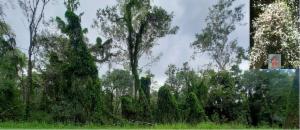
Leaf Tying Moth (Hypocosmia pyrochroma) - a biological control agent of Cat's Claw Creeper (Dolichandra unguis-cati) in the Burnet-Mary catchments
This is a citizen science-based project aimed at raising public awareness of the devastating impact the Cat’s Claw Creeper has on our natural environments as well as contributing to a better understanding of the establishment and dispersal processes of biological control agents as well as their effe
In a specific area
- Ongoing
More Information
Cat’s Claw Creeper (Dolichandra unguis-cati), a Weed of National Significance, is a target for biological control in Australia. The Leaf-Tying Moth (Hypocosmia pyrochroma), a native of tropical South America, was released as a biological control agent for Cat’s Claw Creeper (CCC) in Australia between 2007 and 2010. The Leaf Tying Moth (LTM) was released in 40 sites in Queensland and northern New South Wales and has only become successfully established in four sites in Queensland - Oxley, Moogerah, Coominya and Boompa. The most successful method of establishment in the field was as larvae in insect-proof cages.
LTM became successfully established in the Boompa area in 2015 and has since dispersed 21km south-east through the Munna Creek sub-catchment (Mary River) and north-west towards Biggenden through the Degilbo sub-catchment (Burnett River).
Ticket Required: No
Minimum Age: 13
Languages: English
